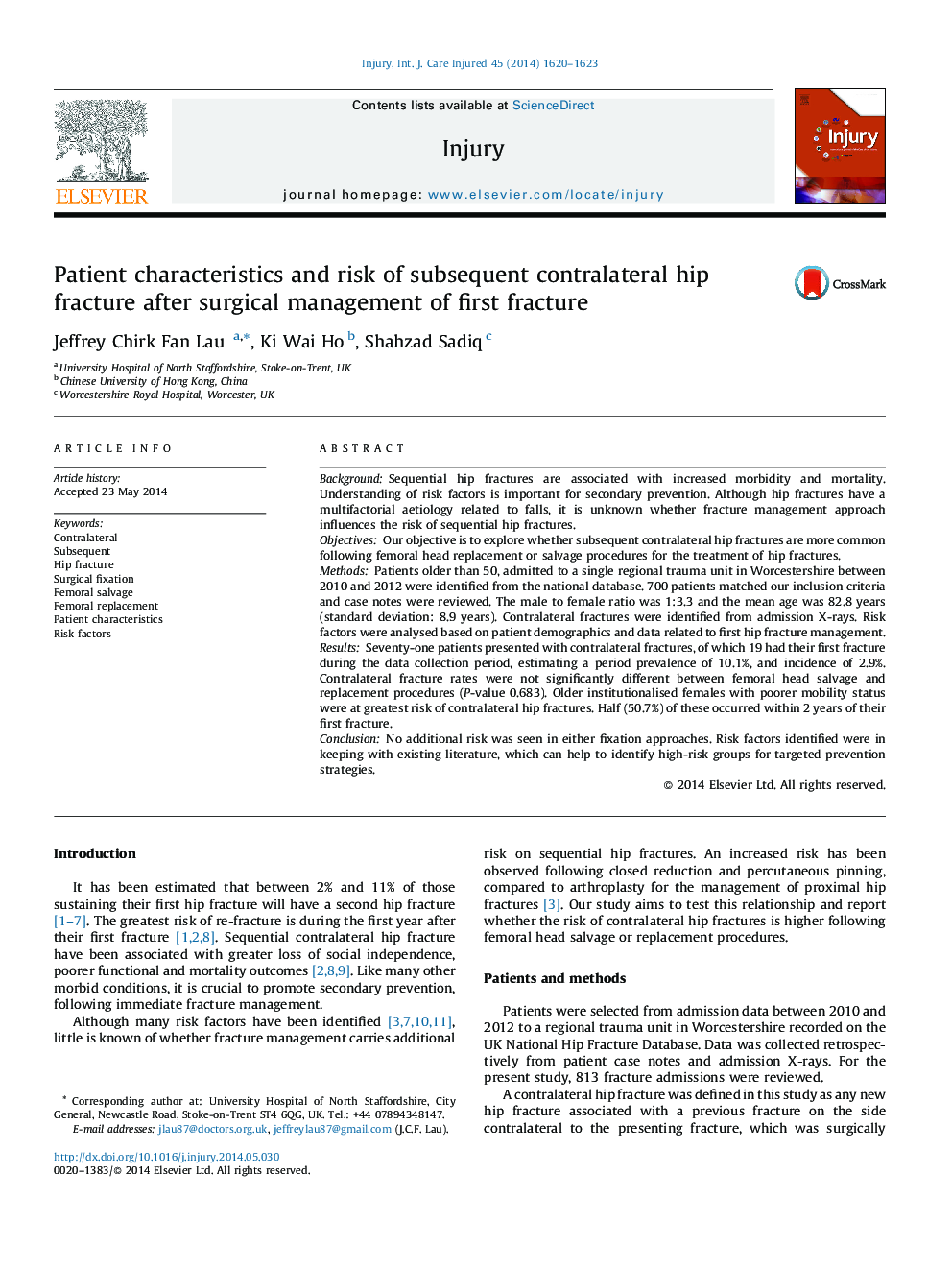| Article ID | Journal | Published Year | Pages | File Type |
|---|---|---|---|---|
| 3239518 | Injury | 2014 | 4 Pages |
BackgroundSequential hip fractures are associated with increased morbidity and mortality. Understanding of risk factors is important for secondary prevention. Although hip fractures have a multifactorial aetiology related to falls, it is unknown whether fracture management approach influences the risk of sequential hip fractures.ObjectivesOur objective is to explore whether subsequent contralateral hip fractures are more common following femoral head replacement or salvage procedures for the treatment of hip fractures.MethodsPatients older than 50, admitted to a single regional trauma unit in Worcestershire between 2010 and 2012 were identified from the national database. 700 patients matched our inclusion criteria and case notes were reviewed. The male to female ratio was 1:3.3 and the mean age was 82.8 years (standard deviation: 8.9 years). Contralateral fractures were identified from admission X-rays. Risk factors were analysed based on patient demographics and data related to first hip fracture management.ResultsSeventy-one patients presented with contralateral fractures, of which 19 had their first fracture during the data collection period, estimating a period prevalence of 10.1%, and incidence of 2.9%. Contralateral fracture rates were not significantly different between femoral head salvage and replacement procedures (P-value 0.683). Older institutionalised females with poorer mobility status were at greatest risk of contralateral hip fractures. Half (50.7%) of these occurred within 2 years of their first fracture.ConclusionNo additional risk was seen in either fixation approaches. Risk factors identified were in keeping with existing literature, which can help to identify high-risk groups for targeted prevention strategies.
